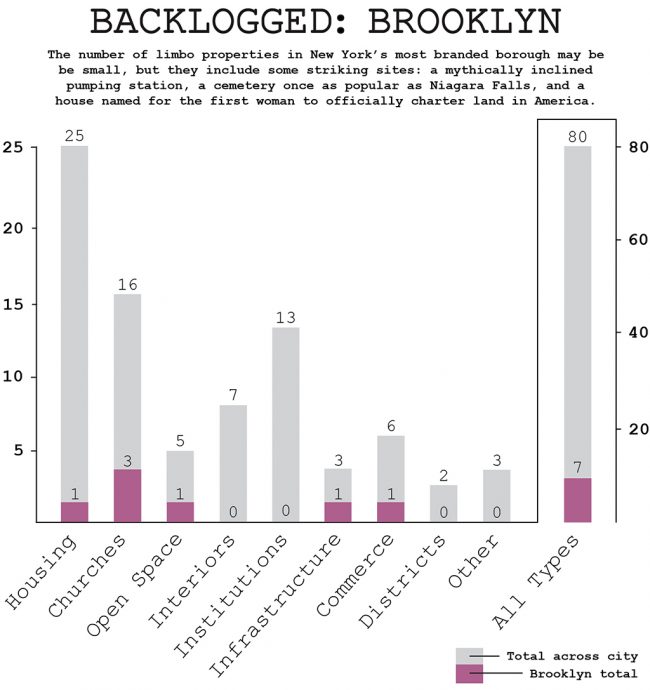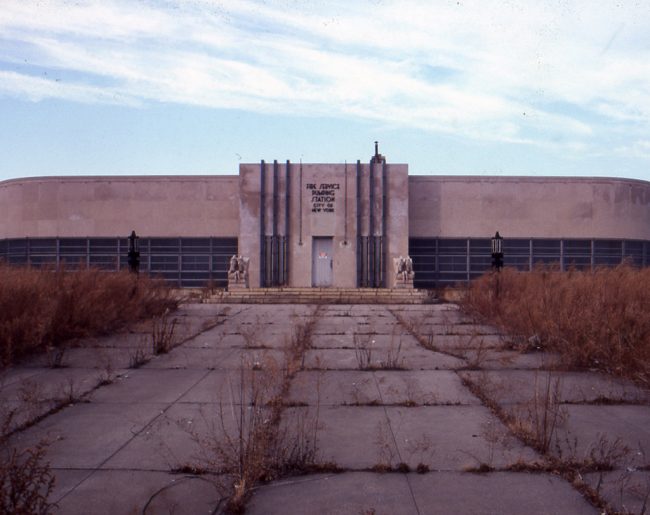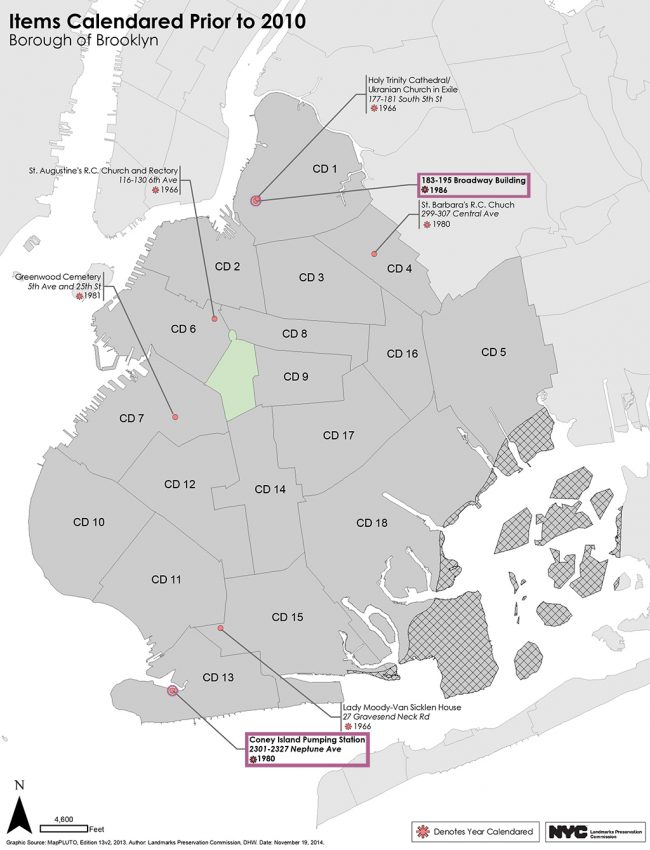
We are celebrating 15 years — and counting — of stories that are deeply researched and deeply felt, that build a historical record of what the city has been.
We are celebrating 15 years — and counting — of stories that are deeply researched and deeply felt, that build a historical record of what the city has been.

Categories are not official Landmark Preservation Commission designations and were created by Urban Omnibus. Housing includes single- and multi-family housing; Open Space includes parks, cemeteries, and a country club; Institutions include cultural institutions and schools; and Commerce includes commercial and industrial properties. Sites that include multiple buildings up for landmarking are presented as one property. | Graphic by Jonathan Tarleton
Over the past two weeks we’ve brought you stories from a number of properties around the city: an old farmhouse on Staten Island, the gatehouse to a historic Queens cemetery, and the Broadway theaters of 42nd Street. Among many others, these highlights currently sit on the New York City Landmarks Preservation Commission’s backlog of almost 100 properties. The sites were once considered by the Commission for landmark designation (and attendant protection under law) but were not immediately acted upon — in LPC terminology, they were “calendared.” Some properties have languished on the calendar since the mid-60s.
Under mounting pressure from the City Council to speed up its process, the Commission launched an initiative to decide the status of these limbo properties by February 2016. Today, we’ll round out Landmark Limbo by visiting Brooklyn, where the LPC is considering the fate of an unusual fire service station on Coney Island, and the Bronx, for a trip to a beautiful, eclectic Presbyterian church.

Irwin S. Chanin’s fire service pumping station on Coney Island, with the original Pegasus statues guarding the entrance (1980) | Photo via LPC
Coney Island Pumping Station (Infrastructure)
Address: 2301 Neptune Avenue
Originally Calendared: 1980
Built: 1937
Brooklyn native Irwin S. Chanin, an architect known for Manhattan theaters, apartments, and offices, designed this Art Deco fire service pumping station — his only public building in the city. The limestone-clad, single-story structure once served to boost water pressure for firefighters on Coney Island; the site was one of a handful of high-pressure pumping stations built throughout the city in the first half of the 20th century. But as pumping technology improved, the Coney Island station became obsolete and shut down in the ’70s. It has since endured hard times, now sitting neglected in an abandoned lot. The entrance, originally flanked by two limestone statues of Pegasus, looks far barer after the creatures’ relocation to the Brooklyn Museum’s Sculpture Garden in 1981 following vandals’ attempts to deface them. The horses symbolize Neptune, the Roman god of water, and also refer to the station’s location on Neptune Avenue. The City developed proposals and a tentative budget to turn the building into a homeless shelter in 1990, but the plans never materialized. If eventually landmarked, the pump house would become Coney Island’s first landmark outside the amusement district.

Forman Family building at 185 Broadway in Brooklyn (date unknown) | Photo via LPC
Broadway Building (Commercial)
Address: 183-195 Broadway
Originally Calendared: 1980
Built: 1882
This four-story Italianate structure dates back to Williamsburg’s history as a downtown district in the 1880s. Built as a factory and warehouse for shoe dealer James Sparrow and his son, it is one of a few remaining cast-iron buildings in the outer boroughs. After the Forman family purchased the building in 1937, shoes were supplanted by tableware and “Forman Family” lettering was added to the façade. The family company still owns the building, which now houses a Capital One Bank on the first floor and office space upstairs. It also owns a far more famous locale across the street that may wield some of that original tableware: Peter Lugers Steakhouse.
To read more about another backlogged property, the Lady Moody-Van Sicklen House, check out Lisa Santoro’s field trip to Gravesend.

All Brooklyn properties currently in the LPC backlog. Properties profiled above are bordered in purple. Click here from more information on each Brooklyn site. | Map via LPC
Ben Pardee is an urbanist, hip-hop enthusiast, and yogi. He is a project assistant on Urban Omnibus and blends his deep Texan pride with Yankee sensibilities.
The views expressed here are those of the authors only and do not reflect the position of The Architectural League of New York.